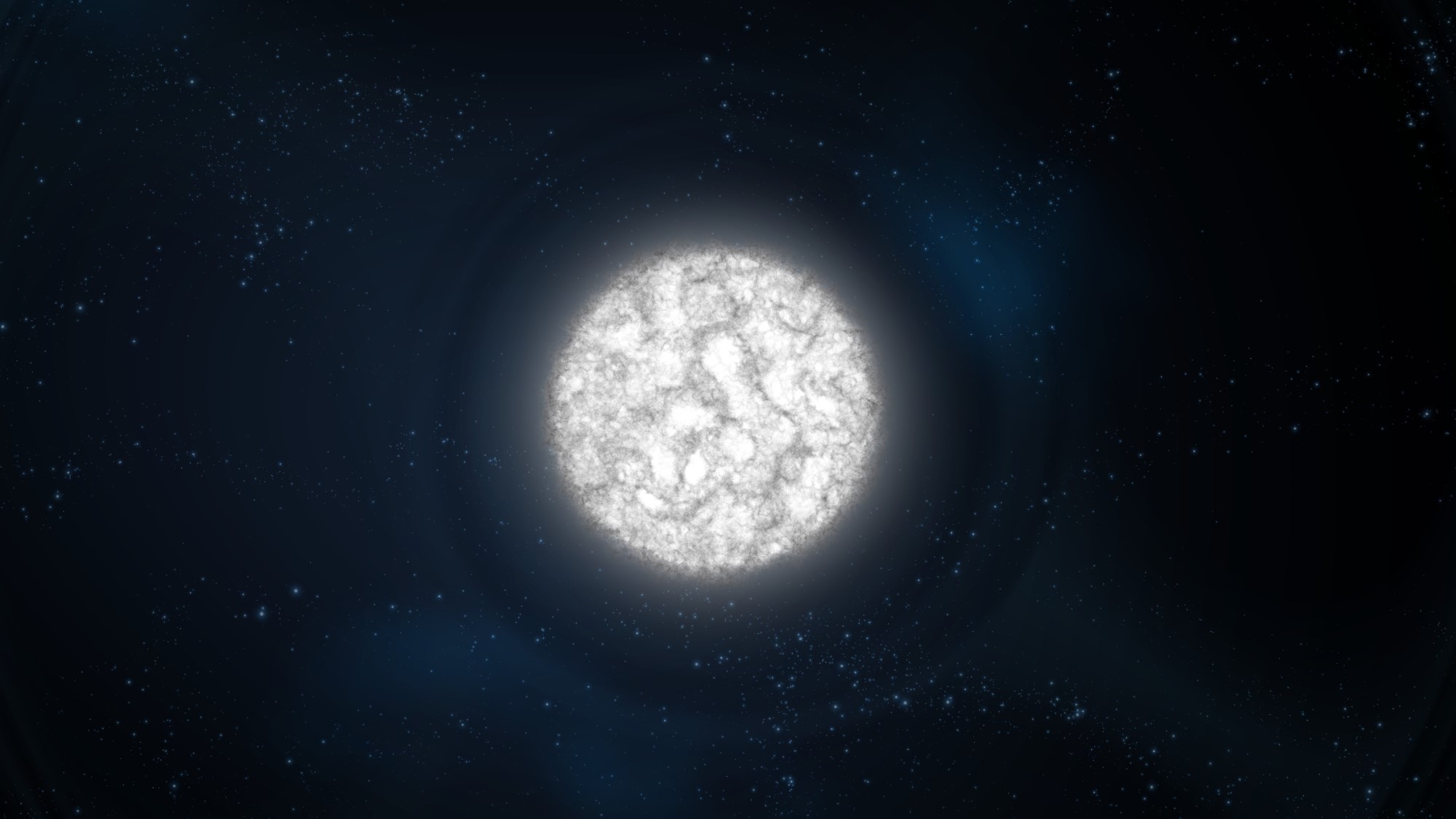
Astronomers have made the first detection of a supernova in radio waves, finding that an exploding white dwarf star was feeding from a companion star like a cosmic vampire before it blew. Rather than drinking blood like the vampires of legend, this undead star was greedily feasting on helium-rich material from its stellar victim, which ultimately led to its own demise.
Designated supernova SN 2020eyj, this Type Ia supernova was discovered by the Zwicky Transient Facility camera on Palomar mountain. This discovery was followed up with the Nordic Optical telescope on La Palma and the large Keck telescope on Hawaii. These follow-ups revealed the material around the supernova was unusually dominated by helium-rich matter, making it different from other Type Ia supernovas.
"Once we saw the signatures of strong interaction with the material from the companion, we tried to also detect it in radio emission," research lead author and Stockholm University Department of Astronomy postdoctoral researcher Erik Kool said in a statement. "The detection in radio [waves] is the first one of a Type Ia supernova — something astronomers have tried to do for decades."
Related: Boom! Astronomers just watched the largest explosion in space rage for 3 years
Strong signatures of helium detected in the light from the exploding system led the team to theorize that the companion star being drained by the doomed white dwarf is rich in the element. The team behind the findings also found the companion donor star had been mostly stripped of material before the explosion.
Radio waves like the ones used to detect this supernova are caused when material ejected by an exploding star crashes through surrounding matter, called circumstellar material; this results in particles like electrons being accelerated to near-light speeds and emitting so-called synchrotron emissions, which can include radio waves.
If the supernova occurs in a so-called "clean" environment lacking circumstellar material, these radio waves would be absent. Astronomers have never detected these radio emissions coming from a Type Ia supernova — until now.
Type Ia supernovas give out a standard light output that is so uniform from event to event that astronomers refer to them as "standard candles." The light emitted from them can be used both as a cosmic measuring stick to determine the distance from Earth to a supernova, as well as to gauge the rate at which the universe is expanding.
Yet despite this utility, researchers are still somewhat in the dark about how Type Ia supernovas are caused. The prevailing theory is that Type Ia supernovas are triggered when a compact white dwarf star feeds on too much matter from a companion star, which can be any type of star, from a giant star to another white dwarf, but this new research shows this could happen in different ways.
"This is clearly a very unusual Type Ia supernova, but still related to the ones we use to measure the expansion of the universe," co-author and Stockholm University Department of Physics researcher Joel Johansson said. "While normal Type Ia supernovae appear to always explode with the same brightness, this supernova tells us that there are many different pathways to a white dwarf star explosion."

How dead stars explosively rise from the grave
White dwarfs like the one that once existed in the studied system are stellar remnants that form when stars of masses similar to the sun have exhausted their fuel for nuclear fusion, reaching the end of their lives.
The exhaustion of hydrogen to convert to helium in the cores of sun-like stars results in the outward radiation pressure that supports stars against the inward pressure of gravity ceasing. This causes the core to collapse and the star's outer layers to swell out to as much as 100 to 1,000 times the star's original diameter during what is called the red giant phase. The sun will enter this red giant phase in around 5 billion years, swelling up and swallowing the inner planets, including Earth. This will leave a cooling stellar core, a dead white dwarf star, surrounded by shed stellar material dead white dwarf star.
This is the end for solo stars like the sun, but white dwarfs in binary systems can spring back to life if material from a companion star flows to their surface. Not only can this trigger further nuclear fusion at the surface of these stars, but if these undead stars accrete too much material, this pushes them over what is known as the Chandrasekhar limit with explosive results.
Defined as a mass of 1.4 times that of the sun, the Chandrasekhar limit is the dividing line between a star that can go supernova and one that can't. That means overfeeding can cause a white dwarf under that limit to gather enough mass to go supernova. Exactly how this overfeeding occurs isn't well understood. Observations in radio waves like this one could help better understand this process.
The team behind this research said that a comprehensive follow-up of radio waves from SN 2020eyj and similar Type Ia supernovas could better define the characteristics of the star systems from which they explode.
The team's research was published on Wednesday (May 17) in the journal Nature.







